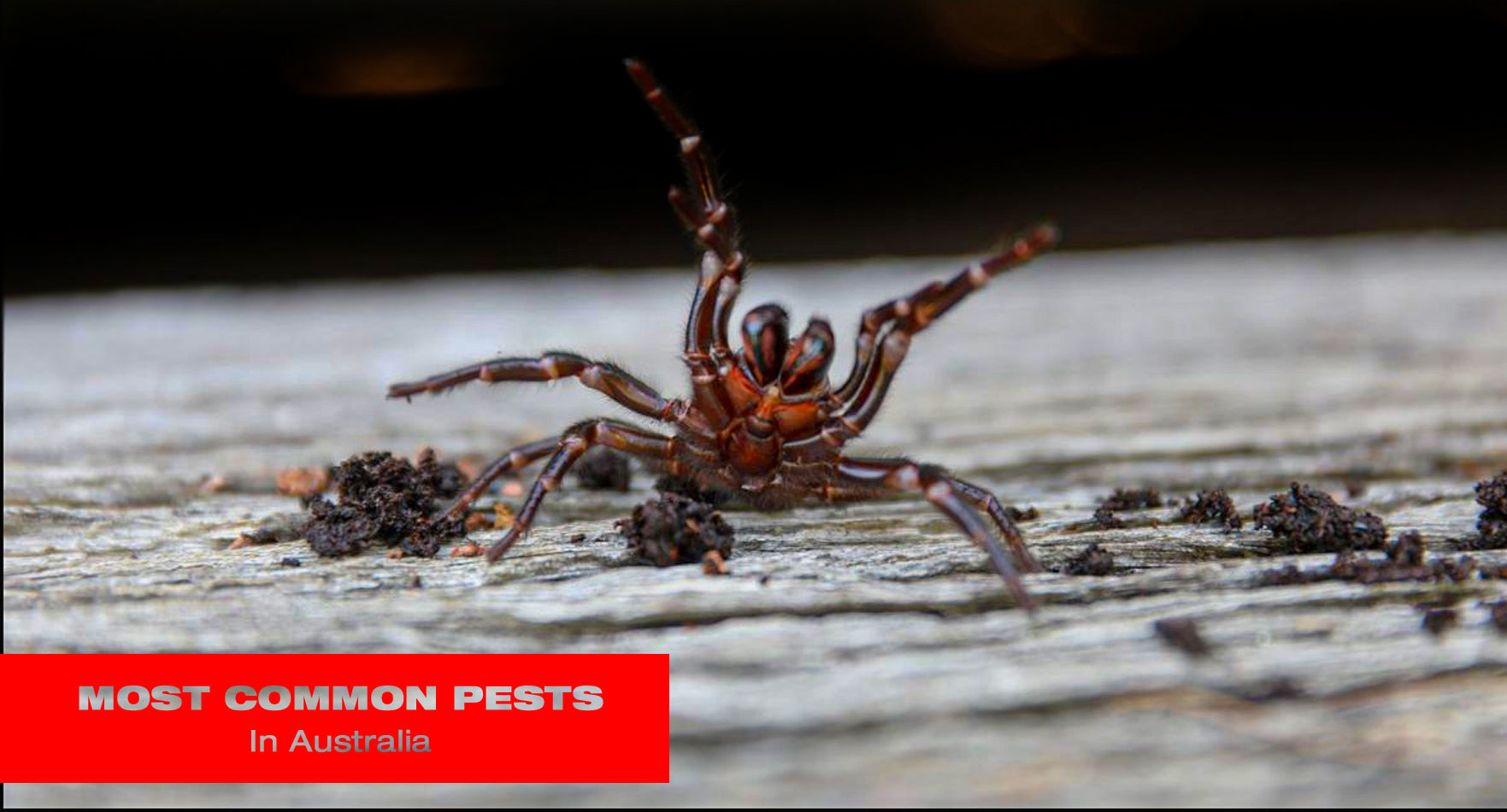Australia is full of critters of fin, fur, or feather, but what about the creepy crawlies? What about the bugs, insects, and pests that have been bothering fellow Australians for decades in cities like Sydney, Melbourne, Brisbane? If you are looking to hire professionals to take care of these pest or even deal with them yourself, there are a few tricks you can start with to get rid of them quickly. Here are a few common Australian pests and some short- and long-term steps to take care of them.
Spiders
Spiders, like Australia’s own funnel-web spider, are native to regions of eastern Australia with moist forest terrain. Rainy weather followed by hot days are great conditions for spiders. Not often considered pests, spiders are great natural predators of common pests found in our homes. But, what can we do when we do not want spiders living near us?
Chemical-free Remedies
You can ward off spiders with common essential oils such as cinnamon, rose, lavender, peppermint, tea-tree, and even vinegar. Spray a solution of your chosen oil and water into cracks, crevices, and other areas to keep spiders out. Be careful to avoid surfaces that are prone to damage, as vinegar and other solutions may be harsh to wood and metal furniture.
Start Cleaning
Spiders eat flies. Removing flies from your home will certainly decrease spider populations. Spoiler alert.. if you wait until the end you may find a guide on how to take care of your fly problem.
Mosquitoes
There are not many places on earth that mosquitoes do not inhabit. They are a pest that not only take the fun out of any outdoor activity, but also can carry deadly diseases.
Stagnant Water
Mosquitoes lay their eggs in stagnant water. Removing any still water around you home will immediately reduce the number of mosquitoes you find in your backyard. Look for stagnant water in and around flowerpots, rain barrels, pool covers, tarps, and more. If it is difficult to remove this water, you can try using larvicides.
3.7 Gallon Backpack Fogger for Mosquito Pest Control
Mosquito Larvicides
The larvae stage in the mosquito lifecycle is the easiest way to eliminate them, as larvae are typically stuck in a confined space of stagnant water. This is your chance to simply spray them with a pesticide for stunting larvae growth, known as a larvicide. There are many different larvicides to choose from and they can typically be applied with an applicator such as a backpack fogger or sprayer. Follow the instructions carefully when using your chosen larvicide.
Pesticides
If the larvae in nearby stagnant water have survived into adulthood and grown into mosquitoes, you still have a chance to eliminate them with pesticides. Bifenthrin, an active ingredient in many professional mosquito pesticides, is an excellent choice for doing pest control in your backyard. Creating a routine of spraying pesticides with a backpack fogger or sprayer will yield the best results. Depending on the pesticide you use, you may only need to treat your property 2-3 times in a season to take care of your mosquito problem.
Flies
Flies, like mosquitoes, are well known pests worldwide and often carry diseases that can harm humans and animals. Here are a few tips to eliminate flies in and around your house.
Preventing Flies
Flies are attracted to food, grease, and other things they can eat and lay their eggs in. To help prevent flies in your area, throw away all fruit and vegetables before they begin to decay. Make sure to keep your trash and rubbish materials sealed. Lastly, clean all stove tops, counter tops, and other surfaces where flies may find food residue. Not only will it reduce fly populations, but your house will be sparkling clean!
Water Traps
If you want to avoid using harmful chemicals, you can create a trap using common items found in your own home. To create a water trap for flies, you will need a water bottle, tape, string, jelly, soap and/or detergent. Cut the water bottle into 2 parts. You should make you cut about 7-10 cm from the top of the bottle and throw away the cap. Fill the bottle with a solution of water and soap or detergent. Then lather the top of the bottle thread with jelly or honey (something to attract flies, maybe leftover lamington?). Place the top part on your bottle into the other part of the bottle. The jelly should hover about 5-7 cm above the soap solution. Finally tape the two pieces of your water bottle together and hang them about 1.5 meters above the ground and 6-9 meters from your home. Flies and other pests in your area will be attracted to the sugars in the jelly or honey and hopefully fall to their soapy demise.
We hope these steps gave you a better understanding of how you can prevent spider, mosquito, and fly outbreaks in your own backyard. Take these tips to help you spray today and enjoy tomorrow.












